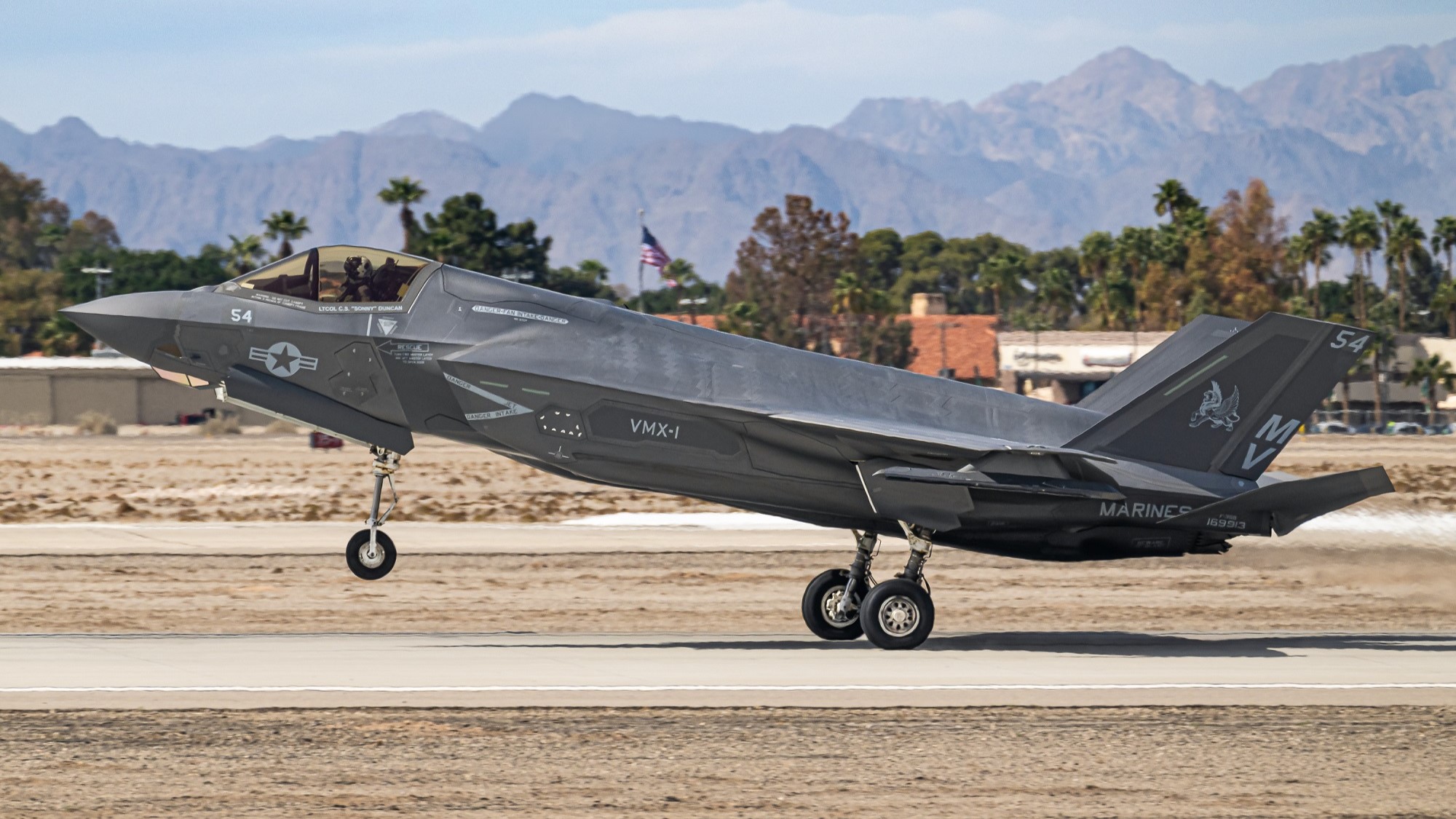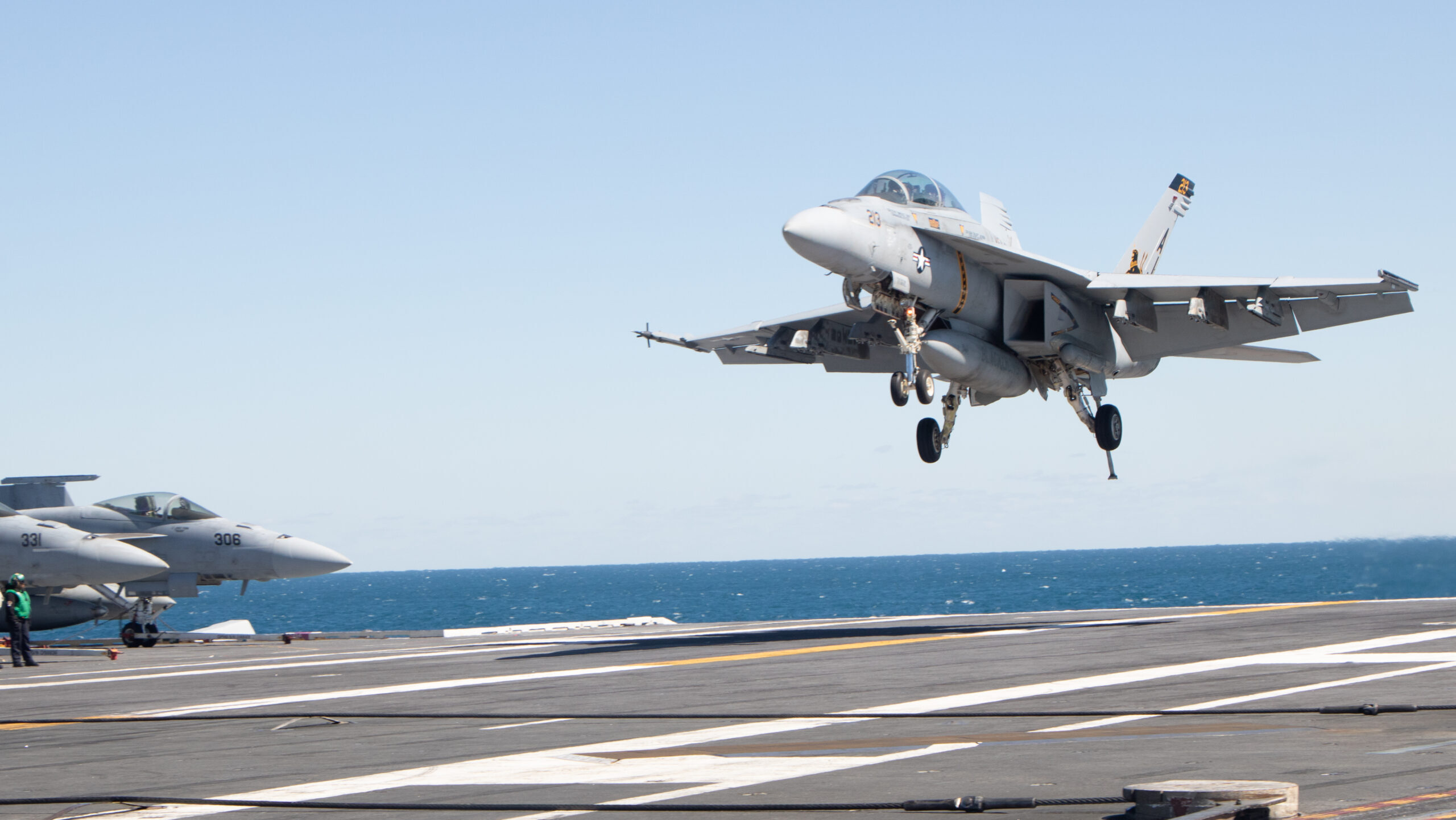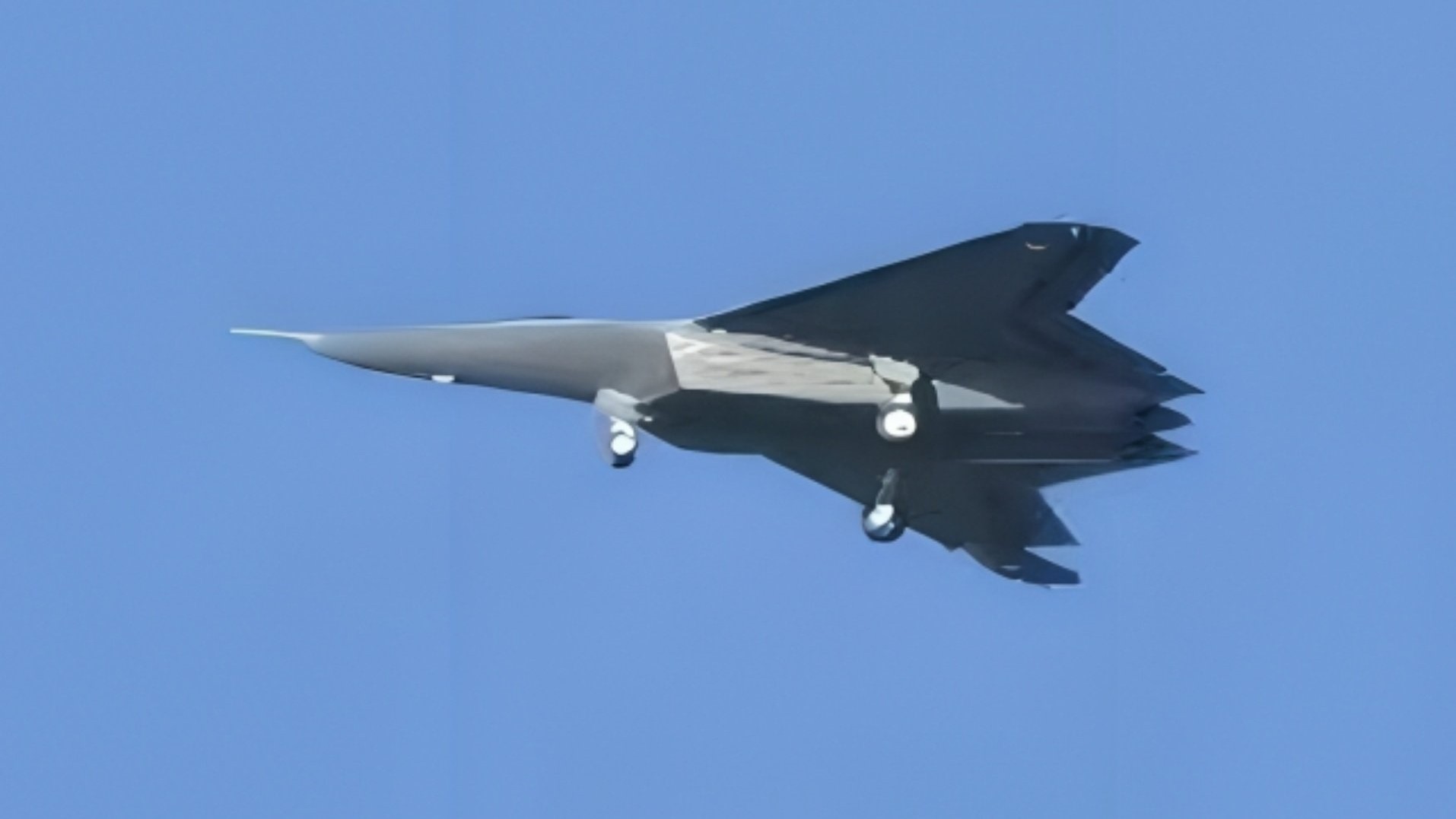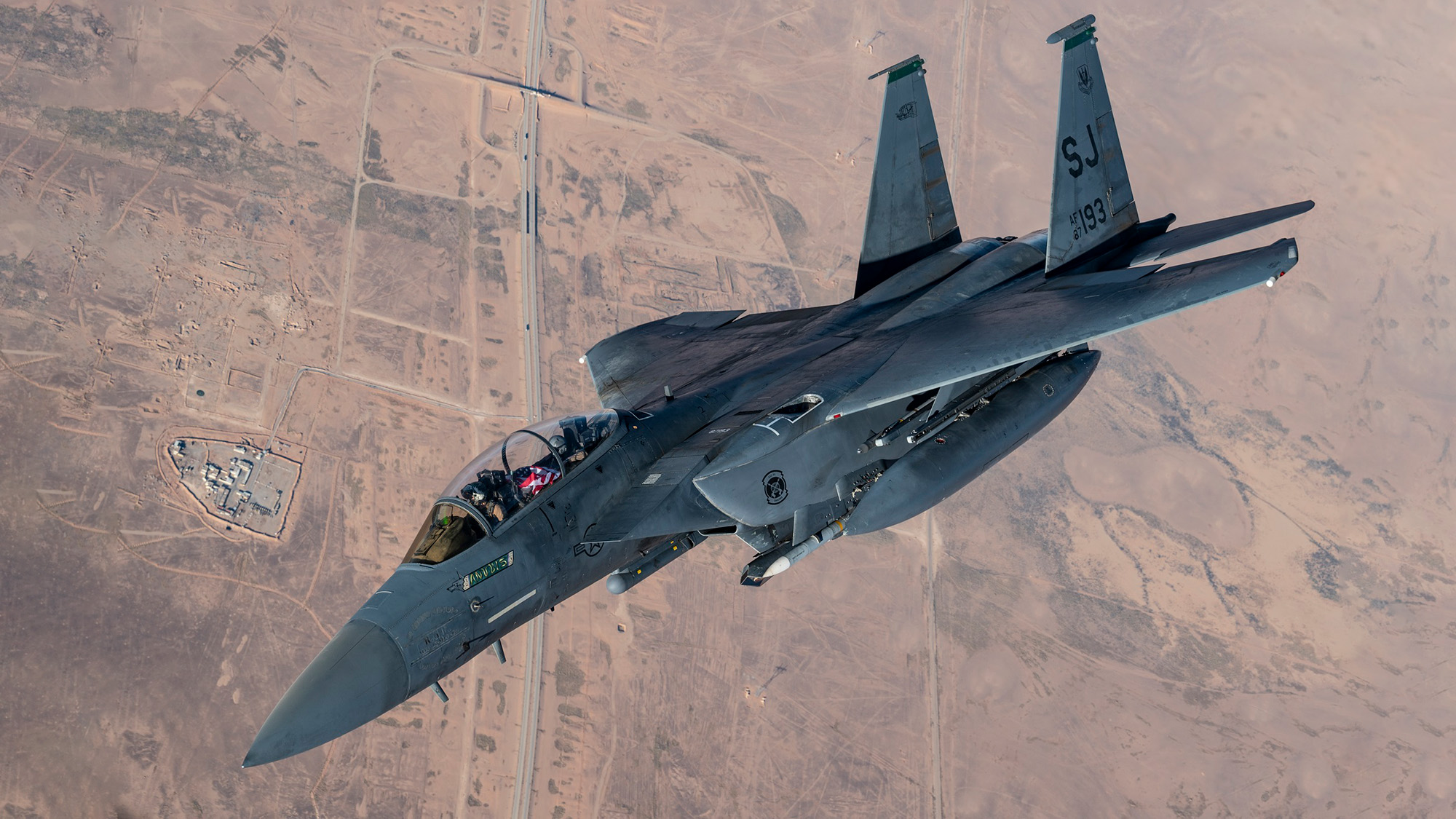The D Brief: NSA chief fired; SecDef under investigation; ‘Limited success’ for Yemen strikes; China’s anti-sat arsenal; And a bit more.
Shake-ups at NSA, NSC Who is in charge of the National Security Agency? It’s unclear after President Trump fired Gen. Timothy Haugh, NSA and Cyber Command chief, plus Haugh’s civilian deputy on Thursday night, according to the Washington Post, which cited White House sources. No reason or even official confirmation has been offered by the White House, although other newsrooms have since published similarly sourced reports. Trump also fired several other national-security officials on Thursday after an Oval Office meeting with right-wing activist Lara Loomer, who urged the dismissal of staffers she deemed insufficiently loyal to the president. “It was a remarkable spectacle: Ms. Loomer, a Sept. 11 conspiracy theorist who is viewed as extreme even by some of Mr. Trump’s far-right allies, apparently wielding more influence over the staff of the National Security Council than Mr. [Michael] Waltz, who runs the agency,” the New York Times reported Thursday. Welcome to this Friday edition of The D Brief, a newsletter dedicated to developments affecting the future of U.S. national security, brought to you by Bradley Peniston and Ben Watson. Share your tips and feedback here. And if you’re not already subscribed, you can do that here. On this day in 1975, Bill Gates and Paul Allen founded Microsoft. Around the Defense Department Defense Secretary Pete Hegseth is under IG investigation. Acting Pentagon Inspector General Steven Stebbins announced Thursday that he is looking into Hegseth’s use of the Signal messaging app to discuss upcoming airstrikes against Houthi terrorists in Yemen last month. “The objective of this evaluation is to determine the extent to which the Secretary of Defense and other DoD personnel complied with DoD policies and procedures for the use of a commercial messaging application for official business,” Stebbins said in his memo. “Additionally, we will review compliance with classification and records retention requirements,” and “may revise the objective as the evaluation proceeds,” he said. Rewind: “Hegseth has repeatedly said no classified information was revealed in the chat, even though it included precise times for the launch of U.S. airstrikes and some targeting details that are regarded as closely guarded secrets ahead of a surprise military operation like the one in Yemen,” Reuters reminds readers. The Houthis shot down another MQ-9 Reaper drone over Yemen, their third since last month, and the second since those March airstrikes began, Jennifer Griffin of Fox reported Thursday. The Houthis claim to have shot down at least 12 MQ-9 drones since October 2023, when Hamas launched its surprise attack on Israel, which triggered Houthis attacks on commercial shipping vessels off Yemen’s western and southern coasts. Developing: The U.S. military’s intensified air war on the Houthis has so far had “only limited success in destroying the Houthis’ vast, largely underground arsenal of missiles, drones and launchers, according to congressional aides and allies,” the New York Times reported Thursday. Mounting costs: “In just three weeks, the Pentagon has used $200 million worth of munitions, in addition to the immense operational and personnel costs to deploy two aircraft carriers, additional B-2 bombers and fighter jets, as well as Patriot and THAAD air defenses to the Middle East,” defense officials told the Times. The operation is intended to last six months, but “The total cost could be well over $1 billion by next week, and the Pentagon might soon need to request supplemental funds from Congress,” the officials said. It’s also draining U.S. precision-weapon stockpiles, which could hamper a U.S. defense of Taiwan, should China choose to move forward with an invasion of the island before the stocks are replenished. Read more (gift link) here. Relatedly, America’s defense industries are still struggling to meet demand for the U.S. military’s three main theaters in Ukraine, the Middle East, and the Pacific. But Becca Wasser and Philip Sheers of the Washington-based Center for a New American Security just published their advice for turning things around, broken into four categories: capacity, responsiveness, flexibility, and resilience. Among their ideas: “Establishing a Critical Munitions Acquisition Fund…to procure and produce key munitions, sustained by profits” from arms exports; Create an advisory group for the defense secretary to isolate which “systems should be prioritized for expanded production and how best to achieve this goal”; “Pursue more multiyear procurement and block-buy contracting to sustain a steady demand”; and more. Read over their full report, entitled, “From Production Lines to Front Lines,” here. In a first, the U.S. is moving Patriot missile batteries from South Korea to the Middle East, Seoul’s Yonhap news agency reported Friday, confirming NBC News reporting on Sunday. The U.S. military in Korea called the transfers “part of a rotation

Who is in charge of the National Security Agency? It’s unclear after President Trump fired Gen. Timothy Haugh, NSA and Cyber Command chief, plus Haugh’s civilian deputy on Thursday night, according to the Washington Post, which cited White House sources.
No reason or even official confirmation has been offered by the White House, although other newsrooms have since published similarly sourced reports.
Trump also fired several other national-security officials on Thursday after an Oval Office meeting with right-wing activist Lara Loomer, who urged the dismissal of staffers she deemed insufficiently loyal to the president.
“It was a remarkable spectacle: Ms. Loomer, a Sept. 11 conspiracy theorist who is viewed as extreme even by some of Mr. Trump’s far-right allies, apparently wielding more influence over the staff of the National Security Council than Mr. [Michael] Waltz, who runs the agency,” the New York Times reported Thursday.
Welcome to this Friday edition of The D Brief, a newsletter dedicated to developments affecting the future of U.S. national security, brought to you by Bradley Peniston and Ben Watson. Share your tips and feedback here. And if you’re not already subscribed, you can do that here. On this day in 1975, Bill Gates and Paul Allen founded Microsoft.
Around the Defense Department
Defense Secretary Pete Hegseth is under IG investigation. Acting Pentagon Inspector General Steven Stebbins announced Thursday that he is looking into Hegseth’s use of the Signal messaging app to discuss upcoming airstrikes against Houthi terrorists in Yemen last month.
“The objective of this evaluation is to determine the extent to which the Secretary of Defense and other DoD personnel complied with DoD policies and procedures for the use of a commercial messaging application for official business,” Stebbins said in his memo. “Additionally, we will review compliance with classification and records retention requirements,” and “may revise the objective as the evaluation proceeds,” he said.
Rewind: “Hegseth has repeatedly said no classified information was revealed in the chat, even though it included precise times for the launch of U.S. airstrikes and some targeting details that are regarded as closely guarded secrets ahead of a surprise military operation like the one in Yemen,” Reuters reminds readers.
The Houthis shot down another MQ-9 Reaper drone over Yemen, their third since last month, and the second since those March airstrikes began, Jennifer Griffin of Fox reported Thursday. The Houthis claim to have shot down at least 12 MQ-9 drones since October 2023, when Hamas launched its surprise attack on Israel, which triggered Houthis attacks on commercial shipping vessels off Yemen’s western and southern coasts.
Developing: The U.S. military’s intensified air war on the Houthis has so far had “only limited success in destroying the Houthis’ vast, largely underground arsenal of missiles, drones and launchers, according to congressional aides and allies,” the New York Times reported Thursday.
Mounting costs: “In just three weeks, the Pentagon has used $200 million worth of munitions, in addition to the immense operational and personnel costs to deploy two aircraft carriers, additional B-2 bombers and fighter jets, as well as Patriot and THAAD air defenses to the Middle East,” defense officials told the Times.
The operation is intended to last six months, but “The total cost could be well over $1 billion by next week, and the Pentagon might soon need to request supplemental funds from Congress,” the officials said. It’s also draining U.S. precision-weapon stockpiles, which could hamper a U.S. defense of Taiwan, should China choose to move forward with an invasion of the island before the stocks are replenished. Read more (gift link) here.
Relatedly, America’s defense industries are still struggling to meet demand for the U.S. military’s three main theaters in Ukraine, the Middle East, and the Pacific. But Becca Wasser and Philip Sheers of the Washington-based Center for a New American Security just published their advice for turning things around, broken into four categories: capacity, responsiveness, flexibility, and resilience.
Among their ideas:
- “Establishing a Critical Munitions Acquisition Fund…to procure and produce key munitions, sustained by profits” from arms exports;
- Create an advisory group for the defense secretary to isolate which “systems should be prioritized for expanded production and how best to achieve this goal”;
- “Pursue more multiyear procurement and block-buy contracting to sustain a steady demand”; and more. Read over their full report, entitled, “From Production Lines to Front Lines,” here.
In a first, the U.S. is moving Patriot missile batteries from South Korea to the Middle East, Seoul’s Yonhap news agency reported Friday, confirming NBC News reporting on Sunday. The U.S. military in Korea called the transfers “part of a rotational deployment,” but said it would “still maintain a ready, capable, and lethal force on the Korean peninsula prepared to respond to any contingency.”
Also from the Middle East: “The Tank Commander Running Israel’s Military Sees a Year of War,” the Wall Street Journal reported Friday.
Developing: The Army is mulling plans to cut as many as 90,000 active duty soldiers, Steve Beynon of Military.com reported Thursday. “Internal discussions are exploring trimming the force to between 360,000 and 420,000 troops—down from its current level of roughly 450,000. The potential cuts would mark one of the most dramatic force reductions in years.”
Fine print: “One defense official cautioned that such internal reviews frequently consider a range of scenarios—including extreme ones—and that no final decisions have been made.” More, here.
Update: We now know the names of the four U.S. soldiers who died during a training accident last week in Lithuania:
- Sgt. Jose Duenez Jr., 25, of Joliet, Illinois;
- Sgt. Edvin F. Franco, 25, of Glendale, California;
- Pfc. Dante D. Taitano, 21, of Dededo, Guam;
- and Staff Sgt. Troy S. Knutson-Collins, 28, of Battle Creek, Michigan.
All of them served with the 3rd Infantry Division’s 1st Armored Brigade Combat Team. About 3,500 soldiers from the 3rd ID deployed in January “to various locations across Poland and the Baltic states for a nine-month rotation as part of Operation Atlantic Resolve to support the United States’ commitment to NATO Allies and partners in Europe,” U.S. Army Europe said in a statement.
On Thursday, Lithuania held a service to recognize the four U.S. soldiers who perished. The country is also considering posthumous state awards for the Americans, President Gitanas Nausėda said Friday. U.S. President Trump will reportedly not attend the dignified transfer of those soldiers who died in Lithuania; NBC News reports he’ll be golfing instead.
Additional reading from around DOD:
- “How China is expanding its anti-satellite arsenal,” via Defense One’s Audrey Decker;
- “Navy expands use of AI for target spotting, tracking,” Defense One’s Lauren C. Williams reported Thursday;
- “A shipbuilder leans into lasers and emerging tech,” Williams reported separately after HII CEO Christopher Kastner spoke to reporters this week;
- “What will quantum computing actually look like?” our science and tech editor Patrick Tucker investigated in a piece published Thursday;
- The Air Force Academy’s commander wants to fire almost 60% of their permanent civilian faculty this summer, part of Hegseth’s DEI purge. The Colorado Springs Gazette has more;
- And “Trump's VA is ending a rescue program that's saved 17,000 military veterans' homes,” NPR reported Thursday.
Etc.
And lastly: Berlin is footing Ukraine’s bill for an alternative to Musk’s Starlink. French firm Eutelsat has been providing high-speed satellite internet service to Ukraine for about a year, and it's been paid for by the German government, CEO Eva Berneke told reporters Thursday in Paris.
“Berneke said there were fewer than a thousand terminals connecting users in Ukraine to Eutelsat’s network, which is a small fraction of the roughly 50,000 Starlink terminals Ukraine says it has, but she said she expected the figure would rise,” Reuters reports. She also said she believed the firm could add 5,000 to 10,000 more terminals to Ukraine “within weeks.”
Poland spent around $84 million to pay for “about half” of the 50,000 Starlink terminals Ukraine has reportedly received since 2022. “The U.S. government and SpaceX have also provided Starlink access to Ukraine,” Reuters notes. Read more, here. ]]>








































































































































































.jpg)











